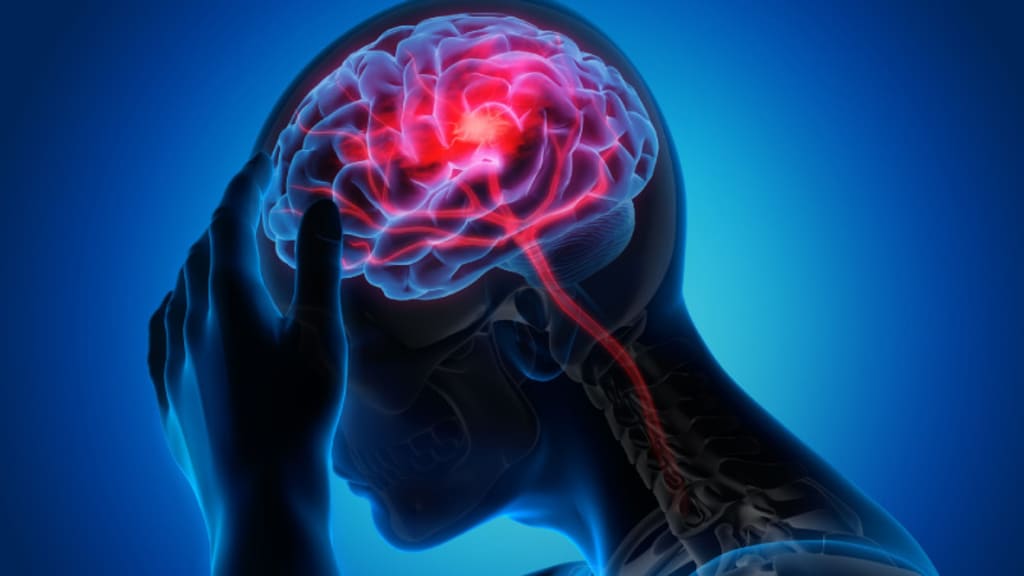Content warning
This story may contain sensitive material or discuss topics that some readers may find distressing. Reader discretion is advised. The views and opinions expressed in this story are those of the author and do not necessarily reflect the official policy or position of Vocal.
EPILEPSY IN CHILDREN CAUSES, SYMPTOMS AND TREATMENT OPTIONS
ALL YOU NEED TO KNOW

Epilepsy is a brain disorder in which brain cells experience abnormal signals and cannot coordinate. It leads to involuntary functions of the affected individual, such as jitteriness, unconsciousness, confusion, brain fog, difficulty in decision-making, memory loss, and other similar problems. The issue is irrespective of the age, gender, or race of an individual. Anyone can be affected by a brain disorder.
Epilepsy in children is identified when the affected child experiences more than two seizures quickly. In such situations, professional medical help is recommended to avoid further deterioration. Seizures in a child can be observed due to an imbalance in brain chemicals, brain tumours, external damage due to an injury, or a stroke. In the case of such scenarios, timely and proper treatment is essential to allow the child to heal at the right time and maintain one’s social life without any hassle.
Causes of Epilepsy in Children
Head Injury- Head injury due to an accident or any other form of external injury is one of the major causes of a child’s Epilepsy. The injury leads to an imbalance of neurotransmitters, high intracranial pressure, cerebral hypoxia, and high metabolic requirements. Such instances make a child’s behaviour abnormal and make it difficult for the affected child to have a healthy and normal routine life.
Meningitis– It is one of the significant reasons for Epilepsy. It is a medical condition in which the fluid around the brain and spinal cord catches an infection or inflammation. Such instances may damage a child harshly if not detected and treated correctly. The condition occurs due to fungi, bacteria, or viruses found in the brain fluid.
Imbalance of Neurotransmitters– A sudden imbalance of neurotransmitters is another primary reason for Epilepsy affecting an individual. The situation happens due to an increased activity of glutamate. Local neurons firing with high frequency and other similar issues are also responsible for seizures damaging the routine of the affected individual. High dopamine activity also contributes to such forms of brain disorders.
Brain Abnormalities- Developmental disorders, brain malformations, or brain injuries during birth.
Genetic Factors- Family history of epilepsy or genetic mutations.
Infections- Such as meningitis or encephalitis.
Febrile Seizures- High fevers in infancy or early childhood.
Symptoms of Epilepsy in Children
Daydreaming- One of the identifiable and prime epilepsy symptoms is daydreaming. It is a layman’s term, described as a oneiric atmosphere leading to strangeness and familiarity in medical terms. The affected child is unaware of the happenings around them and is not attentive to the activities. Such instances occur unconditionally and should be checked by a doctor to begin treating them as early as possible.
Sudden Jerking of Hands and Legs– An episode of Epilepsy is observed due to unusual electrical activity in the brain. An affected child may feel sudden jerks in the hands and legs due to the contraction of muscles. Such a form of Epilepsy is known as myoclonic Epilepsy. The behaviour may also turn aggressive if not treated at the right time.
Loss of Bladder Control– It is also one symptom to identify Epilepsy. The affected child may face incontinence, leading to no control over urine or the passing of stools. The seizures stress the pelvic muscles, leading to incontinence in the affected child.
Other symptoms include-
Seizures– Various types, such as convulsions, absence seizures, or focal seizures.
Loss of Consciousness- Temporary loss of awareness or responsiveness.
Sensory Symptoms- Tingling, numbness, or unusual sensations.
Behavioural Changes- Mood swings, agitation, or cognitive effects.
Treatment of Epilepsy in Children
Medications- Medicines help control the seizure but do not cure it completely. Different types of medicines help to lower the abnormal behaviour observed in the case of Epilepsy in children. Medications such as levetiracetam, valproic acid, topiramate, and lamotrigine are safe options to cure Epilepsy. These medications help lower the disease’s symptoms, such as confusion, jitteriness in arms and legs, brain fog, or continuous staring at one point.
Keto Diet– A ketogenic diet is also helpful in lowering seizures. Approximately 70% of epilepsy patients have seen benefits of it. The diet involves the consumption of high fats and low carbohydrates. It leads to lower glucose levels in an individual, which is the primary cause of seizures. Low blood glucose energy levels result in fewer seizures, leading to the healing process from the brain disorder.
Focal Resection– It is a common form of surgery to cure Epilepsy. It involves removal of the part of the brain that is triggered during an episode of Epilepsy. The surgery is commonly practised and is opted for when other non-surgical methods cannot heal the issue. The surgery involves the removal of the damaged brain tissue, avoiding disturbing the nearby healthy tissues. The surgery is a safe option and can be done for patients of any age group.
Vagus Nerve Stimulation (VNS)- A VNS device is implanted in the chest and connected to the vagus nerve to reduce seizure frequency.
Responsive Neurostimulation (RNS)- An implanted device monitors brain activity and delivers electrical stimulation to prevent seizures.
Lifestyle Modifications- These may include proper sleep, stress management, and avoiding triggers.
About the Creator
Enjoyed the story? Support the Creator.
Subscribe for free to receive all their stories in your feed. You could also pledge your support or give them a one-off tip, letting them know you appreciate their work.





Comments
There are no comments for this story
Be the first to respond and start the conversation.